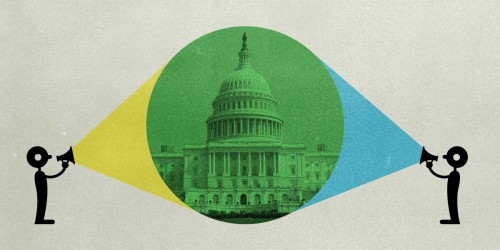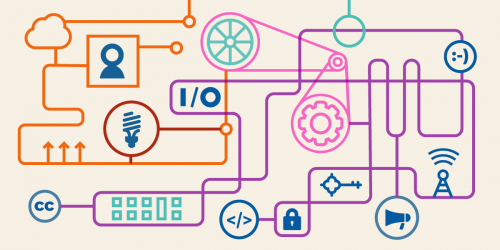Customs & Border Protection recently “discovered” additional daily flight logs that show the agency has flown its drones on behalf of local, state and federal law enforcement agencies on 200 more occasions more than previously released records indicated.
Last July we reported, based on daily flight log records CBP made available to us in response to our Freedom of Information Act lawsuit, that CBP logged an eight-fold increase in the drone surveillance it conducts for other agencies. These agencies included a diverse group of local, state, and federal law enforcement—ranging from the FBI, ICE, the US Marshals, and the Coast Guard to the Minnesota Bureau of Criminal Investigation, the North Dakota Bureau of Criminal Investigation, the North Dakota Army National Guard, and the Texas Department of Public Safety.
CBP stated that these flight logs and a list of agencies it later prepared based on those logs represented all the missions the agency flew on behalf of non-CBP agencies. Yet after EFF and CBP briefed the remaining issues in the case in our Cross Motions for Summary Judgment and on the eve of the pivotal court hearing on those motions in December 2013, CBP announced it “discovered that it did not release all entries from the daily reports for 2010-2012” responsive to EFF’s FOIA request.
Not only do these new flight logs and the accompanying new list of agencies show a striking increase in the overall number of flights (700 versus 500), they also reveal a sharp increase in the number of flights for certain federal agencies like ICE (53 more flights than previously revealed) and the Drug Enforcement Agency (20 more flights). And they also reveal CBP flew 32 additional times on behalf of state and local agencies—including previously undisclosed law enforcement like the Arizona Department of Public Safety and the Minnesota Drug Task Force. Unfortunately, CBP continues to withhold the names of many of these state and local agencies, arguing that revealing them would somehow impede ongoing investigations. However, as we pointed out in our summary judgment brief, disclosing that CBP was working with, for example, the Pima County, Ariz. Sheriff’s Department would not be specific enough to affect any particular criminal operation. It would hardly be surprising that CBP was working with Pima County because it shares a border with Mexico. It is also—at 9,200 square miles—one of the larger counties in Arizona and has one of the highest crime rates of any county in the country—a rate of 4,983 crimes per 100,000 people. Given the large geographic size of and crime rate in this county and others like it, it is hard to imagine that releasing information about which county sheriff’s department CBP is working with would enable suspected criminals in the area to link CBP’s drone surveillance to their particular criminal activity.
The newly-released records reveal other surprising facts, including that CBP was using its sophisticated VADER surveillance system much more frequently than previously thought and was using it for other agencies. This sensor, also known as Vehicle and Dismount Exploitation Radar, was initially developed for use in the Afghanistan War and can detect the presence of people from as high as 25,000 feet. CBP has used this sensor in its surveillance operations since 2011 and used it at least 30 times for other agencies in 2012. The records CBP previously released to EFF contained no specific mention of VADER technology. As noted by the Center for Investigative Reporting, the system has several limitations—not the least of which is that “it can’t tell the difference between a U.S. citizen and noncitizen.”
The records also indicate that CBP’s drones appear plagued with problems; many of the logs indicate missions were terminated or cancelled due to undisclosed issues affecting both the aircraft (General Atomics was often called in to address issues with the Predators) and the surveillance equipment on board (Raytheon, which supplies the RADAR equipment for CBP’s drones was also called in). The VADER system had its own undisclosed problems.
CBP noted in a recent Privacy Impact Assessment (PIA) that it generally flies its drones in support of its primary mission—“border security.” Yet these records indicate just how blurred that mission has become. This is problematic because, as CBP also notes, drones like Predators enable “the monitoring of large areas of land more efficiently and with fewer personnel than other aviation assets.”
As the use of Predators moves from maintaining security at the nation’s borders to general law enforcement elsewhere within the country, more and more people in the United States will be subject to drone surveillance. CBP states in its PIA that it stores data unassociated with a particular investigation for no more than 30 days, but much, if not most of this data will be associated with an investigation and may therefore be stored indefinitely—even if it includes footage of property, vehicles and people unassociated with the investigation.
CBP also states in the PIA that we shouldn’t be concerned about the privacy implications of its drones because their sensors cannot yet identify individual people. However, these sensors are becoming more sophisticated every day, and it won’t be long before surveillance capabilities like "facial recognition or soft biometric recognition, which can recognize and track individuals based on attributes such as height, age, gender, and skin color" are added to CBP’s arsenal. We need to address these issues before that happens.
Sen. Dianne Feinstein was concerned enough about drone surveillance to amend last term’s Senate Immigration Bill to restrict CBP’s flights in California to within three miles of the border. We should be similarly concerned about CBP’s flights throughout the country—especially when CBP still refuses to reveal exactly which state and local agencies it’s working with. We’ll be arguing just that point in the hearing on our Cross Motion for Summary Judgment in the case this coming Wednesday.
Documents:
In order to be comprehensive, we present the documents CBP previously provided alongside the supplemental disclosures referred to in this report. The updates are marked "NEW."
Agency Lists
- Customs & Border Protection Drone Agency List
- NEW: Customs & Border Protection Drone Agency List - Supplemental
2010 Flight Logs
- Customs & Border Protection Daily Drone Flight Logs - 2010
- NEW: Customs & Border Protection Daily Drone Flight Logs - 2010 - Supplemental
2011 Flight Logs
- Customs & Border Protection Daily Drone Flight Logs - 2011 - Part 1, Part 2
- NEW: Customs & Border Protection Daily Drone Flight Logs - 2011 - Supplemental
2012 Flight Logs










